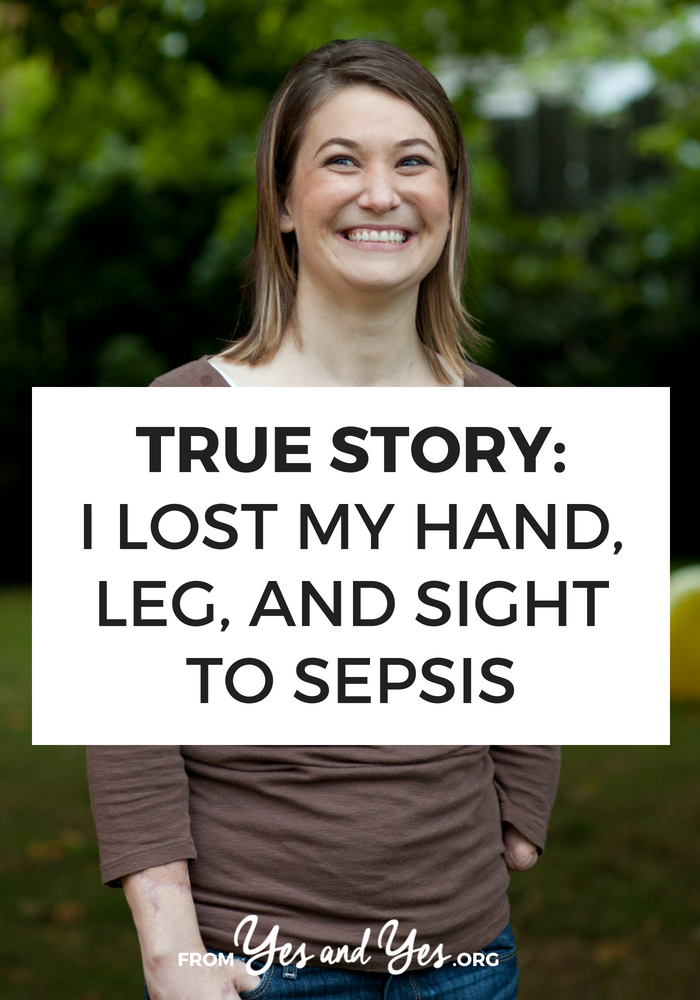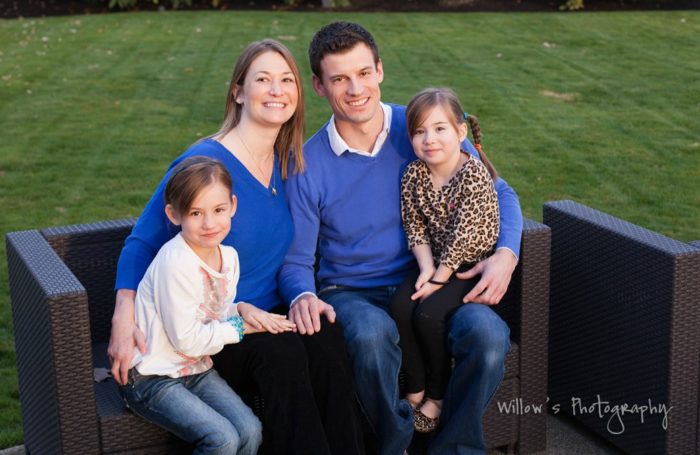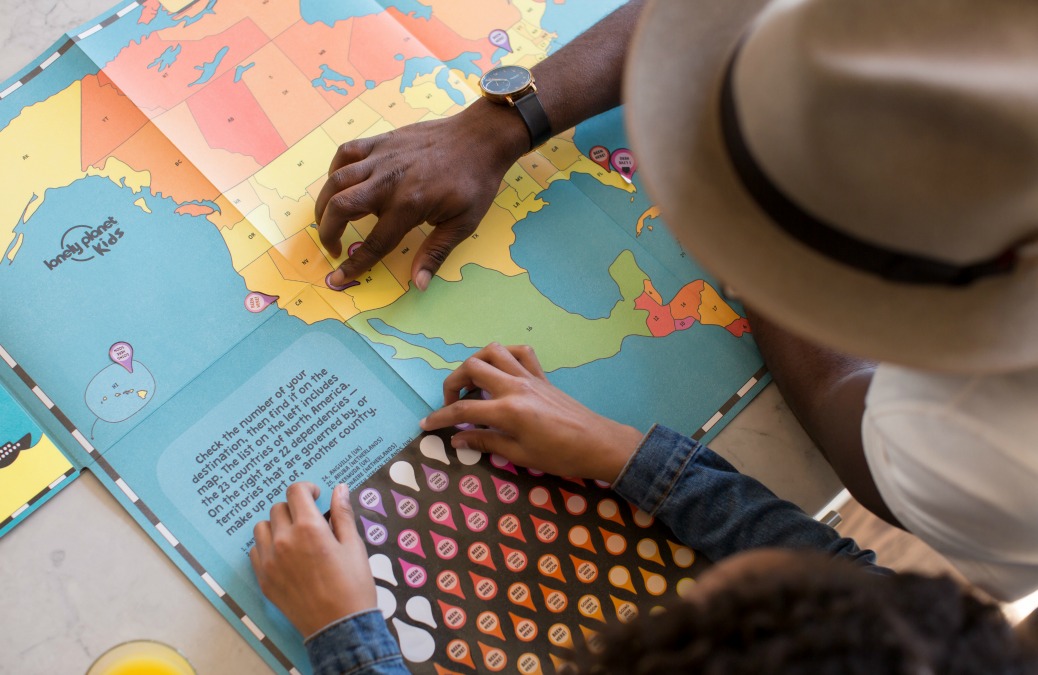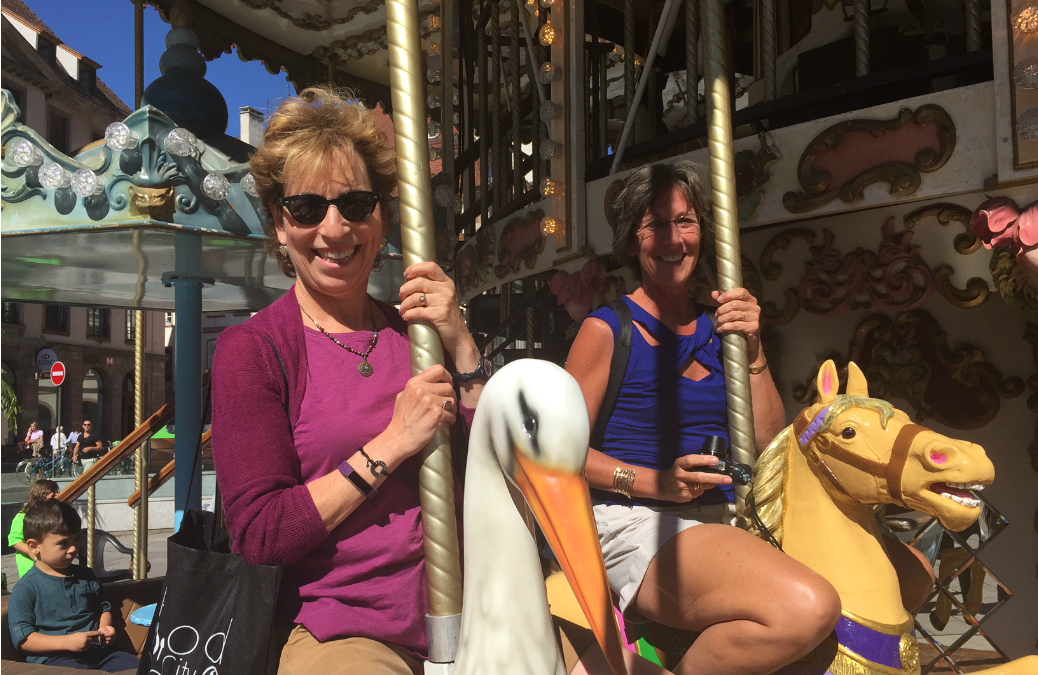
How would you navigate life if you lost your leg, hand, and eyesight to a surprise infection … while you were pregnant? How would you cope with re-learning how to walk, parent, be a partner after something like that? That’s exactly what happened to Carol in 2008. This is her story.
Tell us a bit about yourself!
My name is Carol Decker and I live with my husband Scott and my two beautiful daughters, Chloe and Safiya, in Enumclaw, Washington, a small town about an hour south of Seattle. My oldest daughter, Chloe, is 11 and my youngest, Safiya, is 10. I am an inspirational speaker and author of the new book Unshattered: Overcoming Tragedy and Choosing a Beautiful Life.
I love to have fun with my family and I am up for anything. My husband and I love to try new restaurants, go to movies, and live theater performances. We all have a great passion for snow skiing, listening to music, and dancing in our living room together.
For those of us who don’t know, what is sepsis?
Sepsis is an overwhelming complication from a bacterial infection that can cause tissue damage and organ failure. According to the National Institute of General Medical Sciences, more than a million Americans get sepsis every year and 15 to 30 percent of those people die.
In my case, I was diagnosed with strep pneumonia, which led to septicemia. We don’t know exactly where the infection came from and an exact source was never identified because septicemia is a blood infection.
Both of my feet, my left hand, and my right ring finger had to be amputated in order to save my life. I also had two other complications from sepsis, ocular neuropathy which caused permanent blindness, and DIC (disseminated intravascular coagulation).
DIC caused blood clots, which left wounds on my forearms, abdomen, and thighs that looked like dead patches of sloughing skin. The dead tissue had to be removed regularly to prepare my body for skin grafts. The skin from my scapula down to my hips was taken to be grafted over my wounds. While skin grafts are a medical miracle that I am grateful for, it was a horrific, grueling procedure to go through.
How did your medical team initially treat your sepsis?
I was 33 weeks pregnant with my second daughter when I became ill. During pregnancy, the immune system doesn’t function as well, leaving you more susceptible to medical problems like sepsis.
My illness started with a fever. By the second day, my fever went up to 103.7 degrees and I started having contractions. My husband drove me to Seattle, where my doctor gave me a shot to slow down the contractions. That’s when the nurse noticed a rash on my face.
At that point, they took me to the Labor and Delivery unit at Swedish Hospital. By then, the pain was nearly unbearable, and I begged for some pain medication. They put on the fetal monitor and gave me a shot for the pain. The room sort of went quiet and my husband called my mother to let her know we were going to have the baby early.
All of a sudden, there were several nurses and doctors in my room saying they had to get the baby out right away and that I needed an emergency C-section. As they wheeled me down to the Operating Room, I kissed my husband goodbye. I didn’t know that would be the last time I would see his face.
Safiya was safely delivered at 4 lbs. 15 oz. The doctors were concerned she too would have sepsis but she never developed it. She stayed in the NICU for five weeks before going home.
At the same time, I was in the fight for my life. My blood pressure plummeted. My heart rate skyrocketed. My fever went as high as 106.9 degrees, and my kidneys shut down. I went on dialysis for a few days before they started working again.
I was put into a drug-induced coma for the first 20 days. I had a feeding and intubation tubes and a central line to deliver high doses of medications and fluids. I was also given an experimental drug to stabilize my life signs but it didn’t work.
The only way to save my life was to amputate. My feet, hands, and different parts of my body started to turn black because of the blood clots and medications necessary to keep my blood pressure up. When they amputated and remove the dead tissue, I started to get better.
Around that time is when my family and doctors noticed I was looking past them and a CT scan confirmed my ocular neuropathy. I spent three months in the hospital before I was released to go home for two weeks.
I was readmitted to inpatient rehab for five weeks, where I learned to do daily living activities such as learning to feed myself, get dressed, walk on prosthetics, and learn to set goals.
What did your first few weeks back at home look like?
After the first three months of being in two different hospitals, the doctors released me to go home. I had a wound on both of my hips that would not heal for another year and an infection in my back where they took the donor skin. I had to wear compression bandages over my skin grafts to continue the healing process.
You would think going home would be exciting, but for me, this is when the freight train of my reality hit. When we first arrived at home, I had to use the bathroom and realized that my husband would have to carry me and help me because I couldn’t do it myself.
He then carried me to my bed where pain and anxiety spiraled out of control. I begged him to take me back to the hospital. I told him I couldn’t take care of my children and I couldn’t be a wife to him. I didn’t belong there and that I needed to be in a nursing home or hospital. He told me no and that I belonged in our home and that he and the rest of my family could take care of me.
I felt an overwhelming sense of despair and really didn’t want to live. The nerve pain and the pain from the skin grafts were excruciating and hard to manage with oral medication. My dressing changes took two hours every day.
The first week after being home, my small town held a fundraiser for me and my family. The population of Enumclaw is 11,000 people. Five thousand people came to the fundraiser.
When they wheeled me in, everyone stood up and clapped for me and my family. I couldn’t believe that complete strangers would devote their time and money to help us. Their support was a beautiful gift and I felt like I had a huge cheerleading section telling me that I could do it.

You had to learn so many new things in order to navigate this new era of your life. What have you taught yourself?
At the end of the second week at home, I was admitted to the Harborview Inpatient Rehabilitation Center. It was here that I had to make a choice. I wanted my children to have a normal life, and I didn’t want my disabilities to affect them. Going back to the hospital was difficult, but it was a path I chose so that I could get better and move forward.
At inpatient rehab, I learned to do adult daily living activities like getting dressed, feeding myself, showering, and most of all learning to walk on prosthetics. I spent the next five weeks there and quickly learned that in order to go home I had to meet all of their goals.
Luckily, I was a goal-oriented person before and I was highly motivated to do anything for my children. They centered my therapy around my desire to be a mother again.
I went home on November 5, 2008, and one of my first goals was to walk in high heels by the following year on my birthday. I told my doctor I would walk in them in downtown Seattle to my favorite restaurant, Wild Ginger.
On August 7 of 2009, I did walk into my favorite restaurant in my high heels with my closest family and friends. No one in the restaurant would’ve even guessed I was fighting for my life the year before.
I began to realize that I would be able to do lots of things with my family if I could figure out how to do them differently than most people. I also had to accept that I would need help for the rest of my life.
I realized I would need to approach tasks in a different way. As a blind person, you rely on your hearing, smell, and sense of touch. I don’t have a lot of feeling in my right hand because of nerve damage from the skin grafts on my forearm and sometimes I use my lips to feel things first because they have more sensitivity.
I have learned to become a very organized person and make sure everything is in the same spot. If anyone in the house moves things, they’re in big trouble. I learned to simplify and find clothes that are easy for me to put on since I can’t do zippers or buttons.
My kitchen faucet turns on automatically and my washer and dryer make different sounds so I can do the laundry. My family sorts laundry into three different colored baskets and I do the laundry once the baskets are full.
I simplified my makeup routine by using only a couple of colors instead of multiple options. I only change my shoes once or twice a week since I need help getting them on and off. I have a shower bench in my shower since I can’t stand up.
I try to do everything I can like any other mom like walking my kids to school and listening to them read books to me. My favorite tool is my iPhone and it is my link to the outside world. I’m able to do text messages, emails, read books, and use other apps that help me navigate my world.
I imagine losing your legs, one arm, and your sight is incredibly hard emotionally and psychologically. How have you dealt with the mental and emotional aspects of this? How do you stay positive?
Not only did I have to learn many physical activities but I also had to learn to deal with the mental and emotional struggle of loss and becoming disabled.
I had so many questions, but I realized that sometimes there just aren’t answers. My psych therapist taught me to meditate, which I found helped me control my pain and emotions. She also told me that I wasn’t the person I was before, and I couldn’t change the past.
Through therapy, I learned to live in the present. I really took this to heart and started living my life day to day. I realized I had so much support and love from family, friends, doctors, and therapists.
When gratitude fills your heart, you appreciate life differently. My perspective started to change and I enjoyed life in a new way.
What does daily life look like for you now?
Daily life for me now is just like anyone else. I wake up, get my kids off to school, do my make up, the laundry, and dishes. I feel like a teenager because I have to ask for rides to go places, but it’s always fun to be with someone else.
What surprised you most about this?
I was surprised once when speaking at the University of Puget Sound: A student asked me if I would go back and change what happened to me. I honestly said no.
I realized all the opportunities I’ve had in the last 10 years would never have been possible if I hadn’t had sepsis. I have connected with people on so many different levels and feel I can relate to almost anyone. We all experience loss in someway or another. My loss isn’t any greater than anyone else’s, it’s just different.
What have you learned from this that ANY of us could apply to our daily lives?
Let go, embrace the moment, and have fun. Let go of your fear because you accomplish a lot more and to forgive what happened to you or your situation. Don’t blame others or yourself it’s not worth the burden.
Be grateful for what you do have and not what you don’t. And, of course, have fun means to try jumping on the trampoline with your kids or go skiing in the mountains with them for the first time. Your fun might be different than mine but it brings great joy and happiness.
I like to say: Life is a gift if you don’t open it, you’ll never experience the beauty inside.
Thank you so much for sharing your story, Carol. Do you have any questions for her?












Carol, your story is one of the most inspiring things I’ve read in a while. Thank you so, so much for sharing it. Much love! ❤️
Charmaine Ng | Architecture & Lifestyle Blog
http://charmainenyw.com
What an amazing story! Your courage and perseverance are inspiring. Thank you for sharing!
Wow, she remarkable! Thank you for sharing this story!